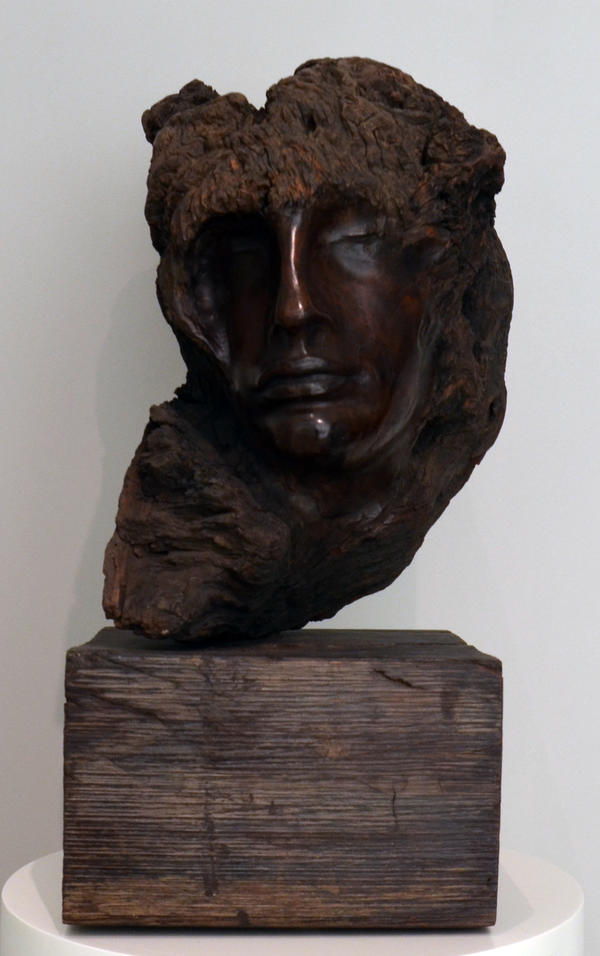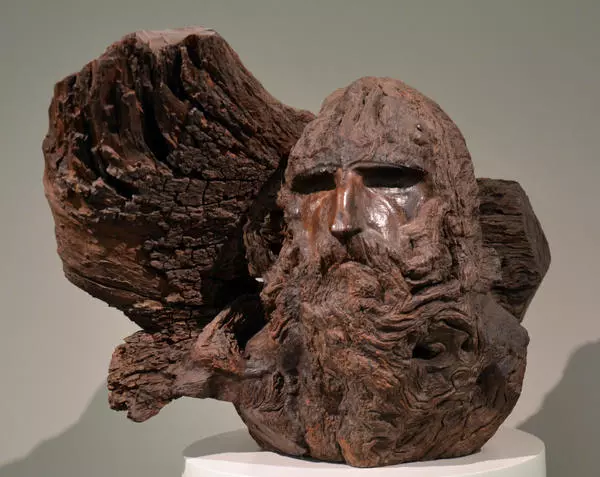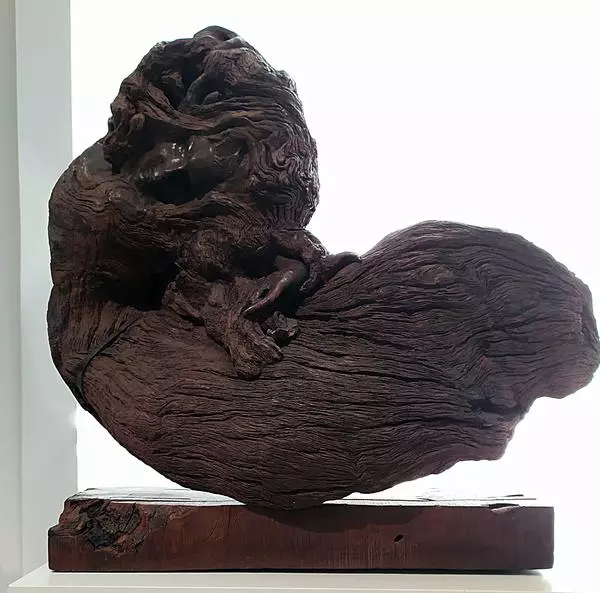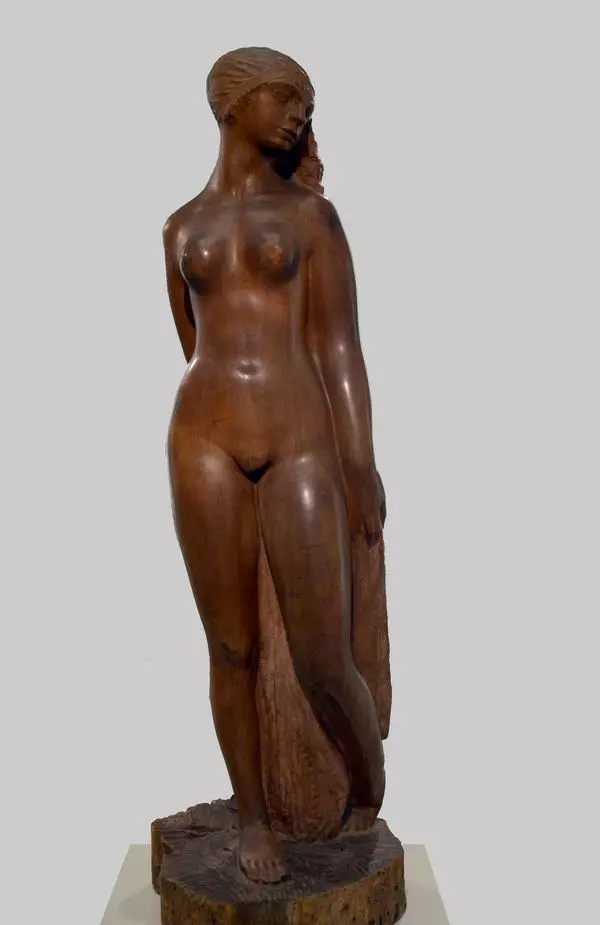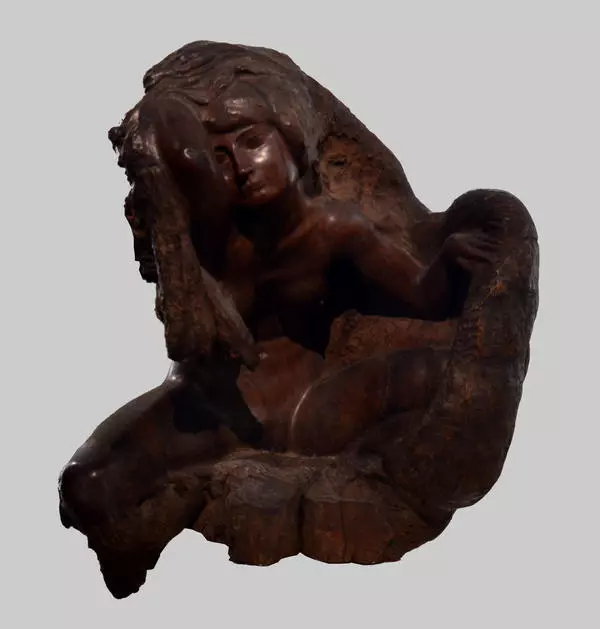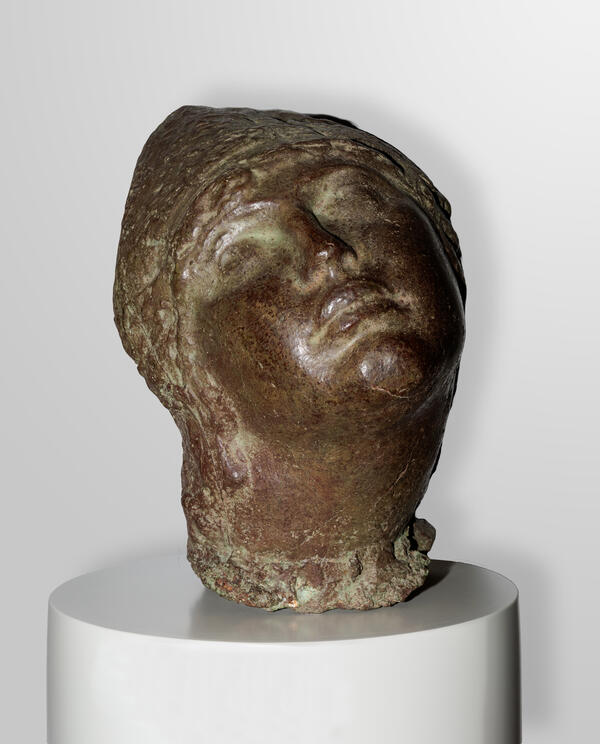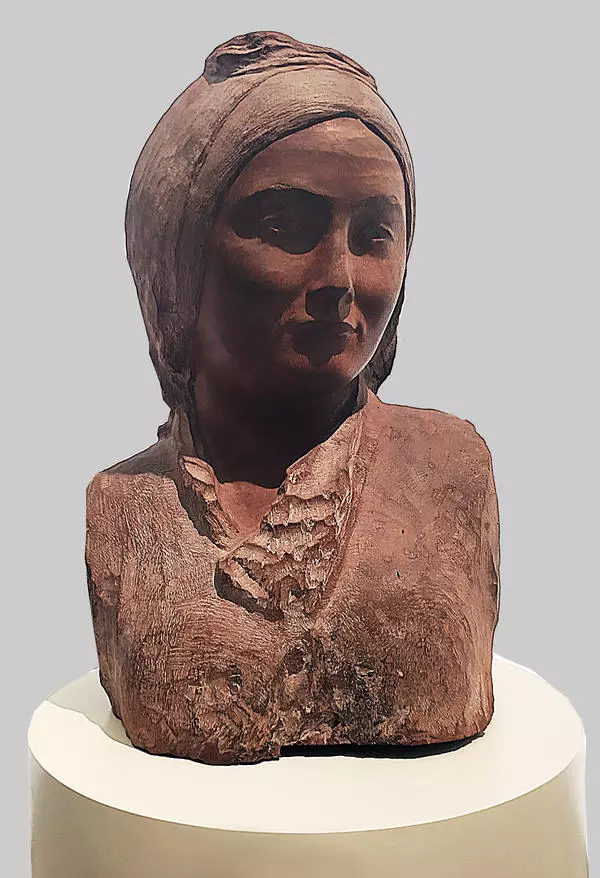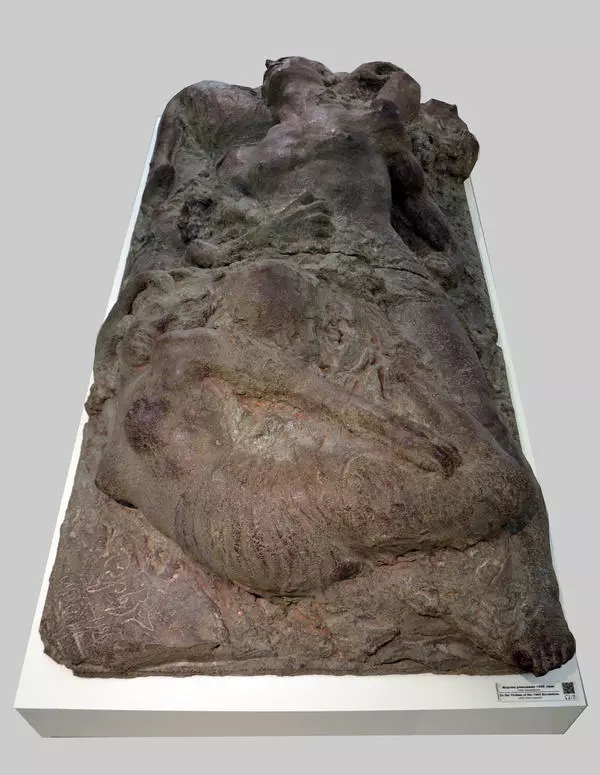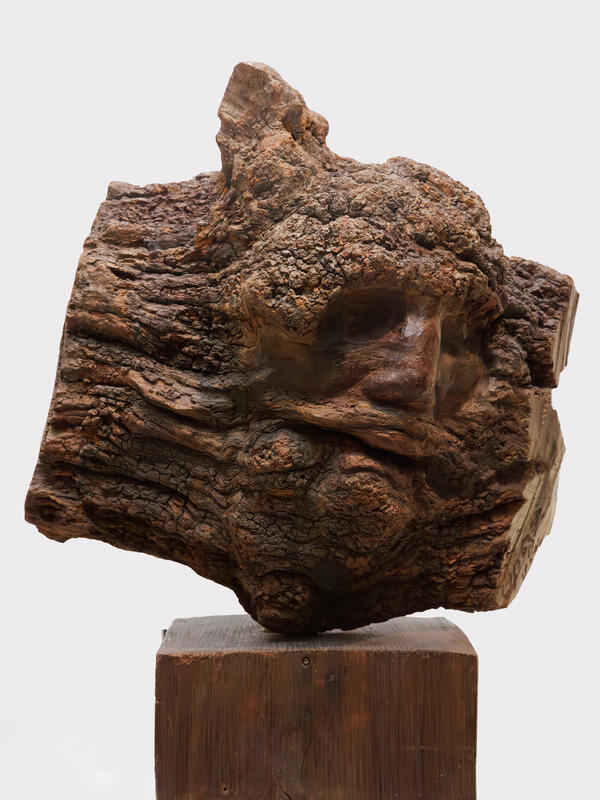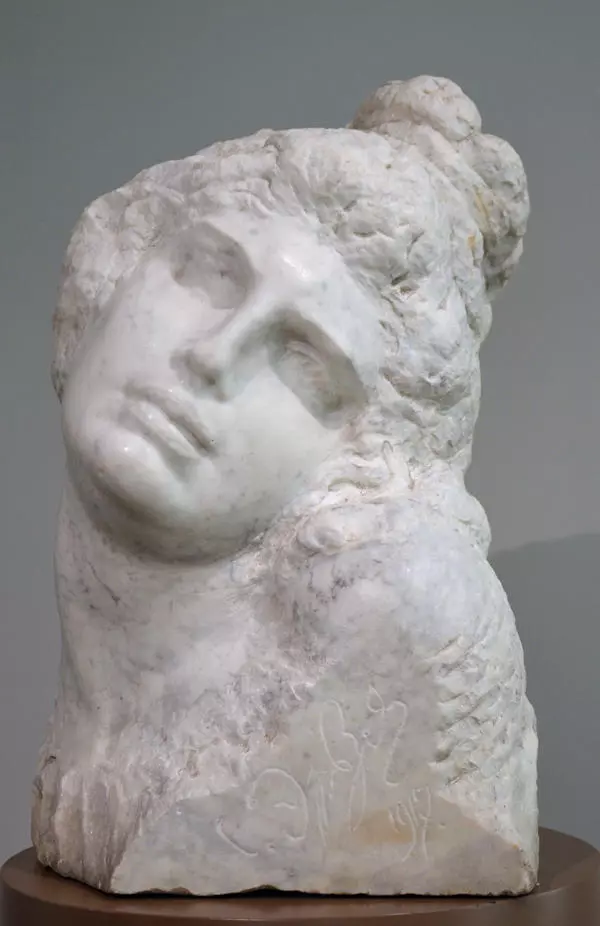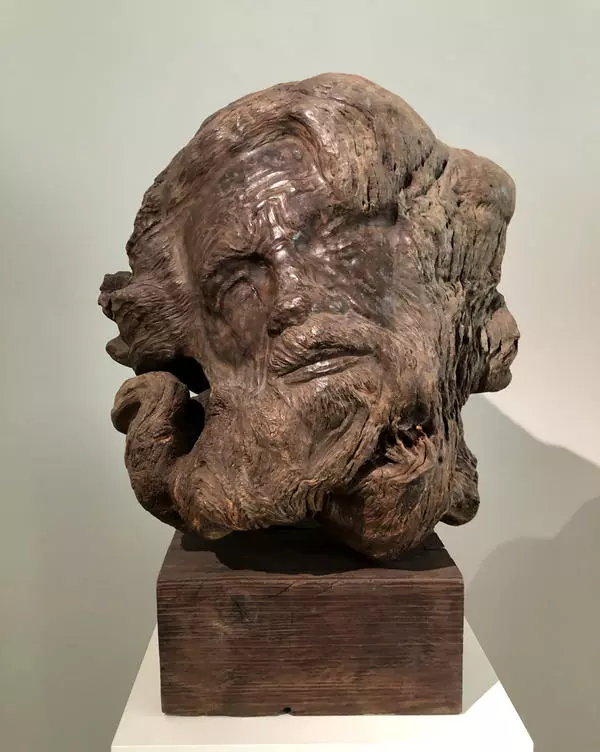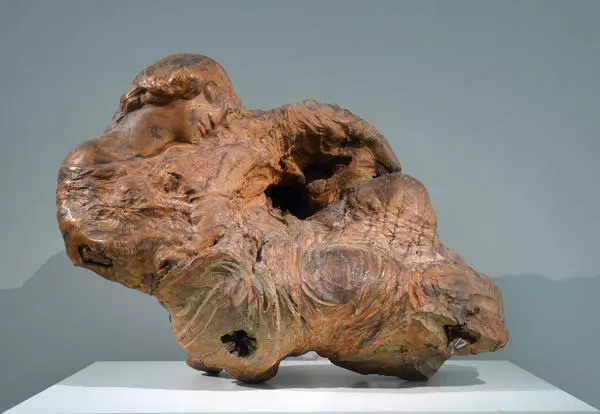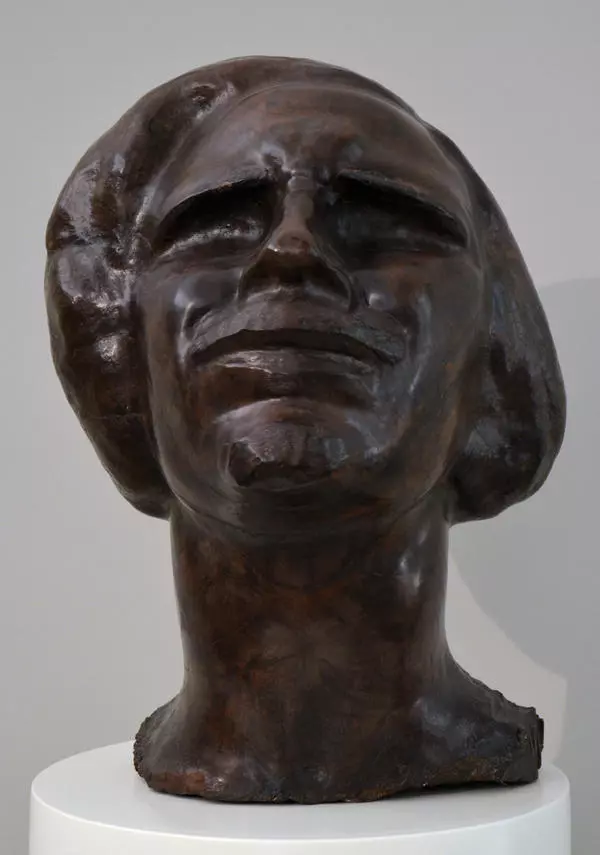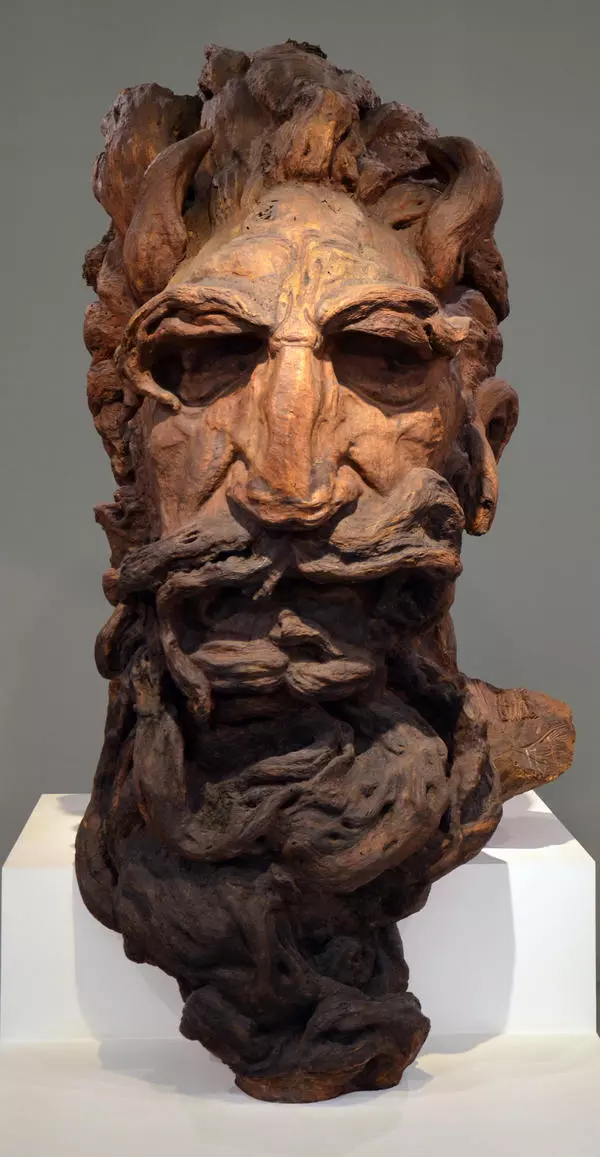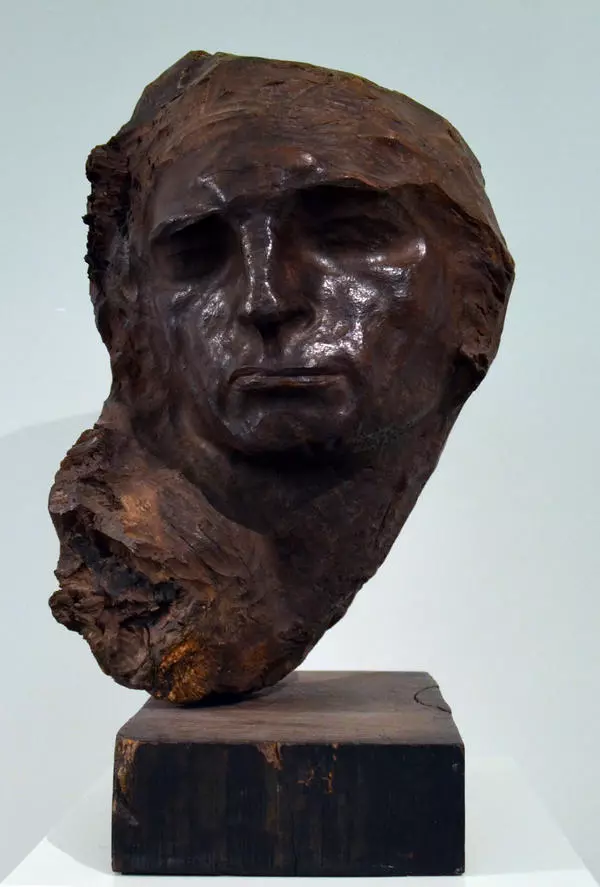Stepan Erzia created Portrait of a woman in 1934 after separation with his homeland and moving to Argentina. For almost a quarter of a century (from 1927 to 1950) the sculptor sought inspiration in the vastness of the South America, where he discovered new materials - rare breeds of subtropical trees: Urundai, Algarrobo and Quebracho.
In his works the sculptor, who chose as his pseudonym the name of the ethnic group of erzia (one of the peoples of Mordva), demonstrated an unbiased, interested approach to other ethnic groups.
Women portraits made up the bulk of works created during the Argentine period - a whole gallery of sculptures by Erzi was dedicated to female images of different peoples: from French and Spanish to almost all representatives of the American continent. Each portrait, despite their different emotional characteristics, is distinguished by a heightened sense of dignity.
Extreme hardness of the Quebracho wood, its natural plasticity and whimsical forms of knurs - all that in complex allowed to create generalized plastic solutions. In his quest for synthesis, the master avoided the open expression of feelings and pathetics. At the same time, Portrait of a woman while externally restraint, is full of inner expression.
In his works Stepan Dmitrievich processed only a part of the piece of wood, allowing the remaining areas to be organically woven into the composition as a hint of hair or details of clothing.
The unifying plastic technique for the series of sculptures was the contrast and interaction of the natural surface of the tree and man-made parts (face, hands), which were carefully polished and covered with mastics. ‘Wood is the only material that has a plastic form by its nature… While embodying a sculptural image in the wood, you can make good use of the natural plasticity’ (V.A. Vatagin).
In the series of female images Erzia expressed his ideas about beauty, about the man and his spiritual aspirations. The artist did not only convey the characteristic features of specific ethnic groups, but also sought to reveal the character of his models, their mood through the use of exotic beauty of rare wood breeds.
During his stay in Latin America Stepan Dmitrievich created a huge number of sculptures, which are now presented in museums and private collections around the world. Returning to the USSR in 1950 (with permission of the Soviet leadership), he brought home all the best works. More than 200 of them, including Portrait of a woman, are presented in the collection of the Museum of the Republic of Mordovia.
In his works the sculptor, who chose as his pseudonym the name of the ethnic group of erzia (one of the peoples of Mordva), demonstrated an unbiased, interested approach to other ethnic groups.
Women portraits made up the bulk of works created during the Argentine period - a whole gallery of sculptures by Erzi was dedicated to female images of different peoples: from French and Spanish to almost all representatives of the American continent. Each portrait, despite their different emotional characteristics, is distinguished by a heightened sense of dignity.
Extreme hardness of the Quebracho wood, its natural plasticity and whimsical forms of knurs - all that in complex allowed to create generalized plastic solutions. In his quest for synthesis, the master avoided the open expression of feelings and pathetics. At the same time, Portrait of a woman while externally restraint, is full of inner expression.
In his works Stepan Dmitrievich processed only a part of the piece of wood, allowing the remaining areas to be organically woven into the composition as a hint of hair or details of clothing.
The unifying plastic technique for the series of sculptures was the contrast and interaction of the natural surface of the tree and man-made parts (face, hands), which were carefully polished and covered with mastics. ‘Wood is the only material that has a plastic form by its nature… While embodying a sculptural image in the wood, you can make good use of the natural plasticity’ (V.A. Vatagin).
In the series of female images Erzia expressed his ideas about beauty, about the man and his spiritual aspirations. The artist did not only convey the characteristic features of specific ethnic groups, but also sought to reveal the character of his models, their mood through the use of exotic beauty of rare wood breeds.
During his stay in Latin America Stepan Dmitrievich created a huge number of sculptures, which are now presented in museums and private collections around the world. Returning to the USSR in 1950 (with permission of the Soviet leadership), he brought home all the best works. More than 200 of them, including Portrait of a woman, are presented in the collection of the Museum of the Republic of Mordovia.

